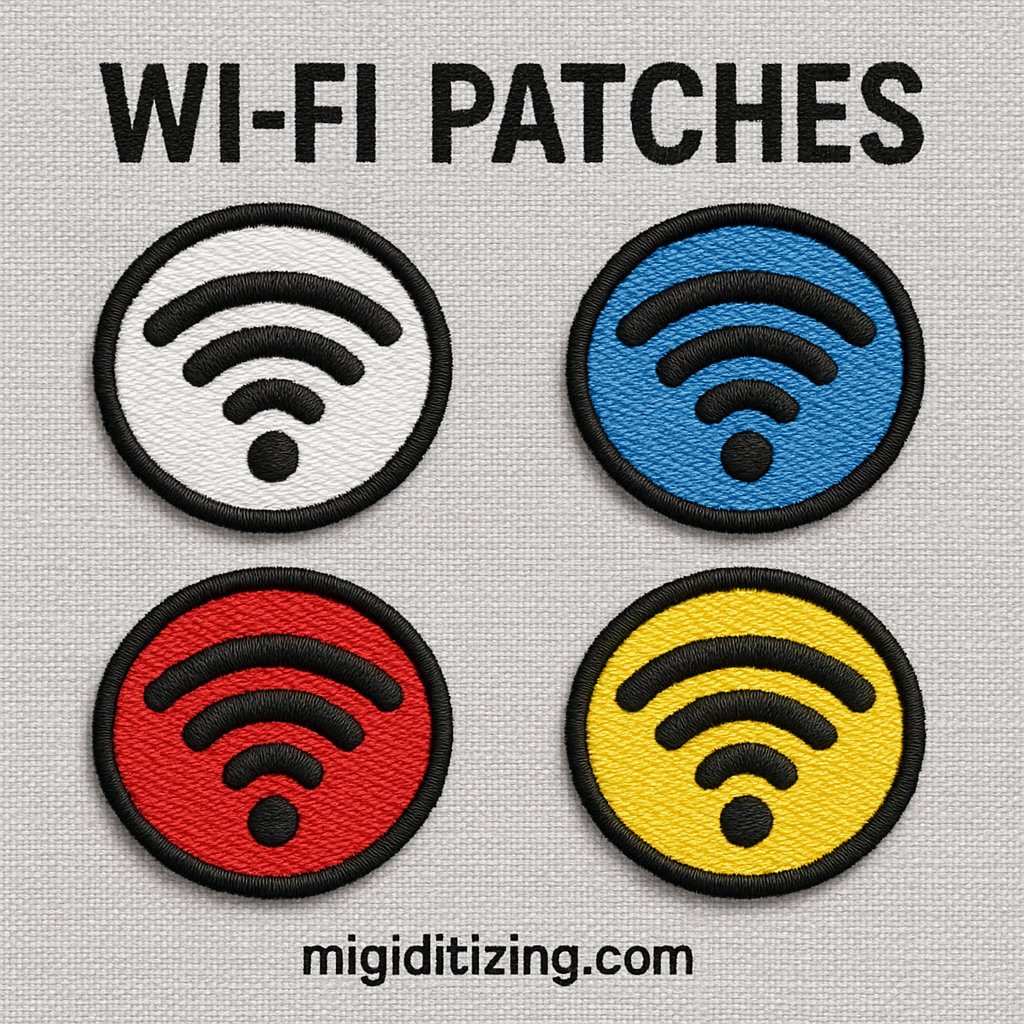Embroidery Digitizing & Interactive Fashion Tech 2025

Introduction
Fashion is no longer just about style — it's about experience, interactivity, and intelligence. As we step deeper into 2025, a silent revolution is taking place in the fabric of the fashion world. At its core lies a surprisingly traditional craft—embroidery, now supercharged through embroidery digitizing.
While most associate digitizing with simply converting images into machine embroidery files, its impact has grown far beyond. Today, embroidery digitizing is the digital backbone of interactive fashion, enabling smart wearables, responsive garments, and emotion-reactive fashion.
In this guest post, we explore how embroidery digitizing has become a hidden hero of fashion technology, bridging the gap between textile craftsmanship and AI-powered interactivity.
What Is Embroidery Digitizing?
At its foundation, embroidery digitizing is the process of converting images, logos, or artwork into a digital format that embroidery machines can read—typically in formats like .DST, .PES, .EXP, or .JEF.
But today’s digitizing is much more than file conversion. It includes:
-
Stitch mapping for movement-reactive fabrics
-
Precise calibration for conductive thread circuits
-
Integration with wearable tech sensors
-
Optimization for AI-powered fashion platforms
The Intersection of Fashion Tech and Embroidery Digitizing
Modern wearable tech isn’t just silicon and code—it’s design, pattern, and embroidery. When wearable sensors need to be discreet, lightweight, and washable, they’re often stitched directly into fabric using conductive thread and smart digitizing.
Examples of Fashion-Tech Embroidery Integration:
| Application | Role of Embroidery Digitizing |
|---|---|
| Heart Rate Shirts | Digitized designs embed ECG sensors with conductive stitches |
| Mood-Sensing Jackets | Digitized embroidery maps out LED thread for mood display |
| Gesture-Control Gloves | Embroidery guides touch sensors and circuits |
| Smart Uniforms | Tracks posture and location using embedded embroidery circuits |
This fusion of textile artistry and tech logic is only possible with high-precision embroidery digitizing.
How Embroidery Digitizing Powers Interactive Wearables
1. Stitch-Level Programming
Each stitch path in a digitized design can define circuit routes, resistance paths, and power flow, essentially turning embroidery into a printed circuit board (PCB) — but for cloth.
2. AI Integration
Modern digitizing software now includes AI mapping that predicts how fabric will behave and adjusts stitch patterns to reduce interference in circuits or sensor pathways.
3. Real-Time Customization
Users can now customize their wearable tech design in real-time (e.g., add initials to a health-tracking hoodie) — and digitizing software automatically integrates the personalization without disrupting the tech layout.
Future-Forward Use Cases of Embroidery Digitizing in Fashion Tech
🎽 Smart Sportswear
Embedded sensors track performance metrics. Digitizing maps ensure they stay wash-safe and sweat-proof.
👩🎤 Performance Costumes
LED-embroidered stage wear that lights up with movement. Digitized to follow body curves and flow.
🧣 Emotion-Responsive Scarves
Stitches guide thermal threads that adjust warmth based on body temperature or external conditions.
🎒 Interactive Backpacks
Tap-activated patterns created using smart-stitched circuits, digitized with pinpoint precision.
Benefits of Embroidery Digitizing in Fashion Innovation
| Benefit | Impact |
|---|---|
| 🎯 Precision Control | Maps circuit paths with 0.01mm accuracy |
| 🧵 Design Freedom | Enables creative, flexible layouts that traditional circuits can't |
| 🚿 Washable Wearables | Digitized embroidery survives hundreds of washes |
| 🌱 Eco-Friendly | Reduces plastic sensors by embedding logic into stitches |
| 💡 Interactive Branding | Logos that light up, vibrate, or respond to touch |
The Tech Behind the Trend: Embroidery Digitizing Tools in 2025
-
Wilcom Embroidery Studio E5
Advanced AI-assisted digitizing, sensor layout integration, and real-time simulation. -
Embrilliance Stitch Artist 4
Compatible with smart threads, LED paths, and conductive fiber mapping. -
StitchWare AI (Emerging Tech)
Converts circuit schematics into embroidery-compatible layouts. -
Bespoke APIs for Shopify & WooCommerce
Enables user-uploaded designs to auto-digitize and ship.
Challenges in Digitizing for Fashion Tech
-
⚡ Conductive Thread Calibration – Wrong stitch tension can cause short circuits
-
🎨 Design vs Function – Balancing aesthetic with sensor placement
-
📱 Compatibility – Syncing embroidery paths with device firmware
-
🔌 Battery Integration – Planning for power modules within stitched designs
-
🧽 Washability – Making sure embedded tech doesn’t degrade over time
Embroidery digitizing professionals are now part designer, part engineer, part UX specialist.
How Small Businesses Can Tap Into This Trend
You don’t need to be Nike or Adidas to use tech-embroidery. Here’s how startups are succeeding:
🛒 Personalized LED Merch Stores
Small Shopify brands are using digitized embroidery to offer LED patches, glow-in-the-dark monograms, and touch-activated designs.
🧑🎓 Campus Clothing
University startups sell tech-enhanced hoodies with GPS stitching to help students find their way on campus.
👩🎨 Artist Collaborations
Illustrators work with embroidery digitizers to convert artwork into reactive fashion items.
Tips to Optimize Embroidery Digitizing for Interactive Apparel
-
Always use specialized conductive thread-compatible digitizing software
-
Ensure stitch direction supports signal flow and sensor connectivity
-
Use layered digitizing: design above, circuitry below
-
Allow manual override for advanced users
-
Offer smart previews to customers online
Conclusion
The world of fashion is being rewired—literally. What once was a static logo stitched onto a polo is now a live, responsive circuit guiding energy and emotion through fabric. Embroidery digitizing has grown into a high-tech artform, and it's reshaping not just how we wear fashion—but how fashion interacts with us.
For designers, digitizers, and brands, this is more than a trend — it's the future of wearable innovation. And it's happening stitch by stitch.
- Art
- Causes
- Crafts
- Dance
- Drinks
- Film
- Fitness
- Food
- Games
- Gardening
- Health
- Home
- Literature
- Music
- Networking
- Other
- Party
- Religion
- Shopping
- Sports
- Theater
- Wellness


